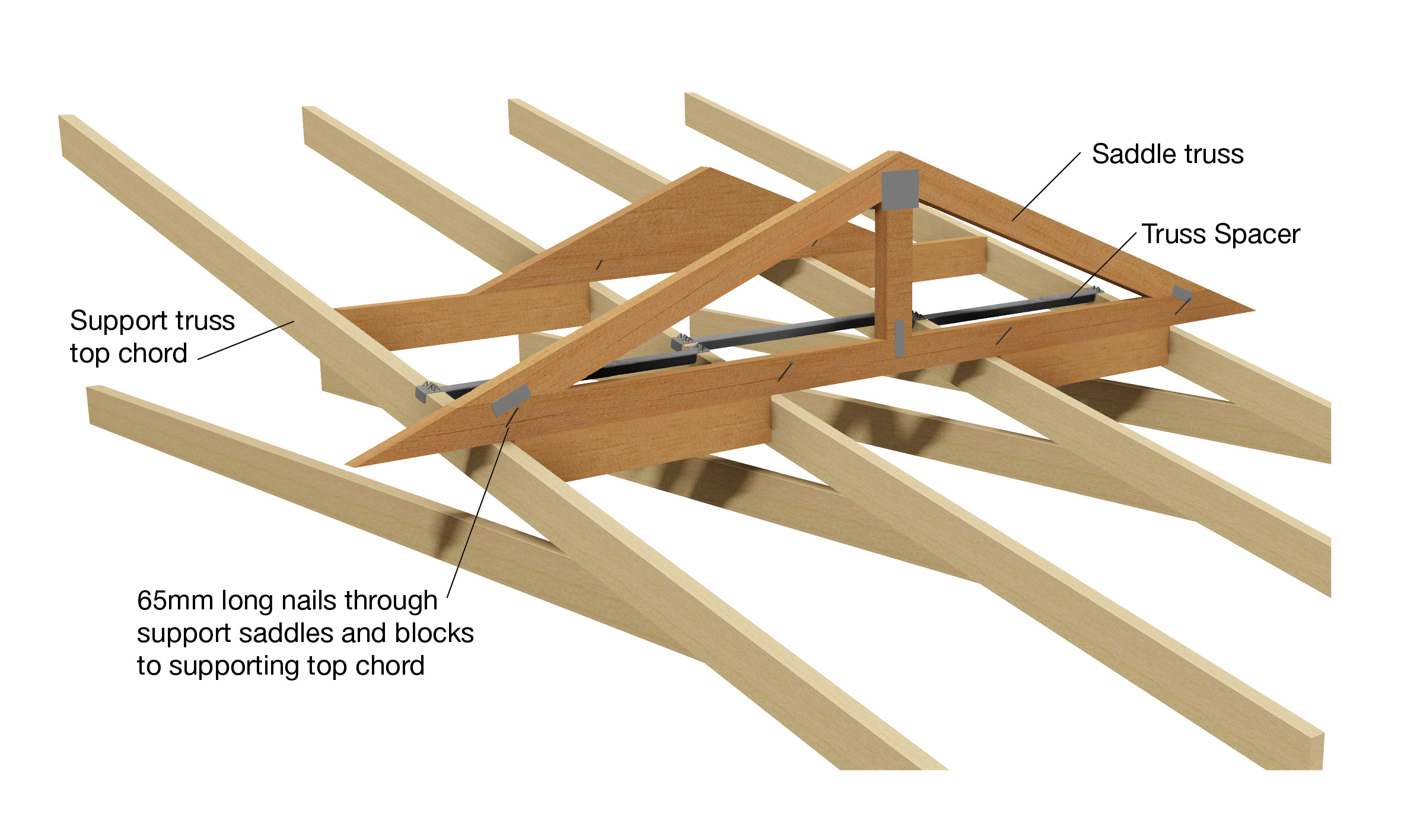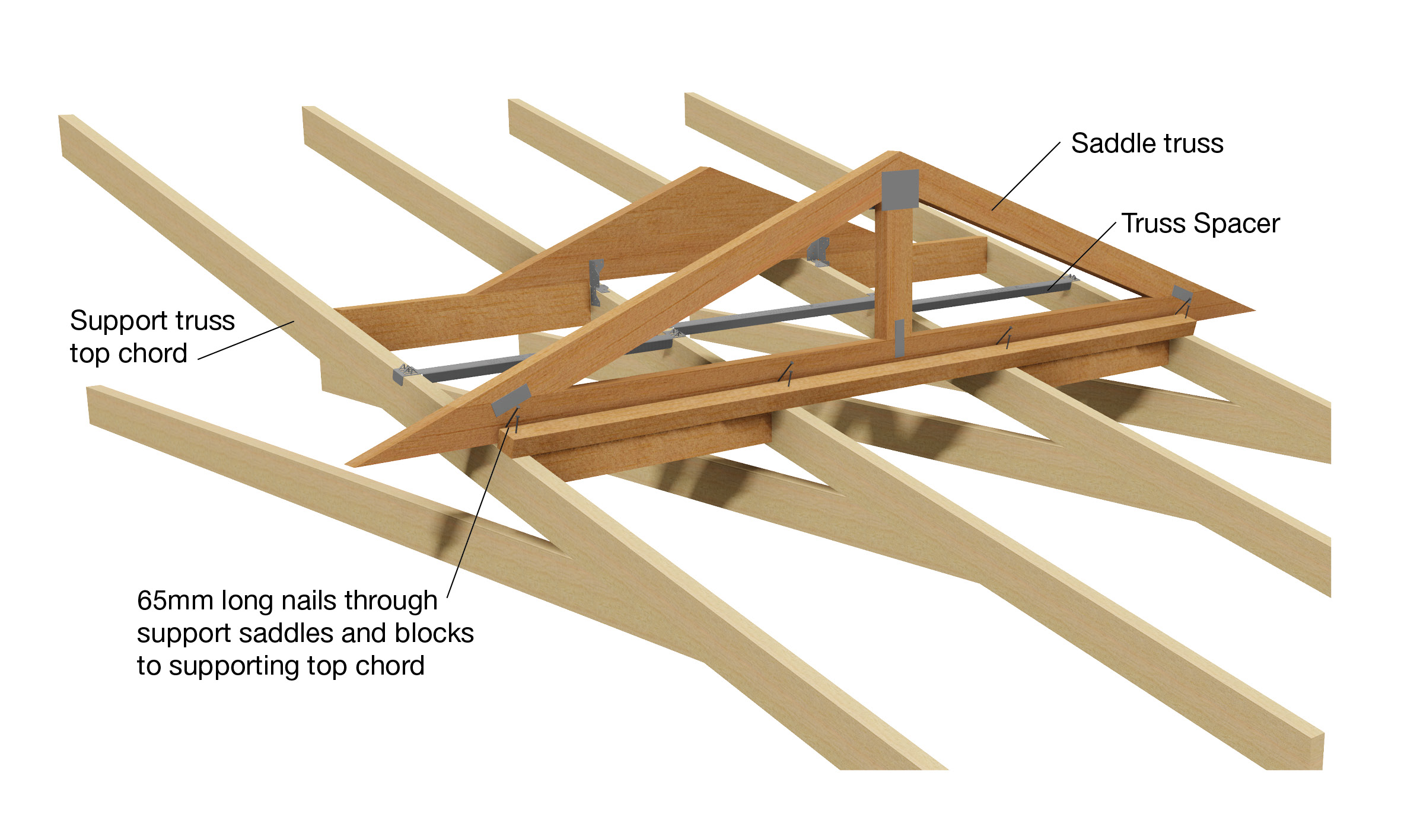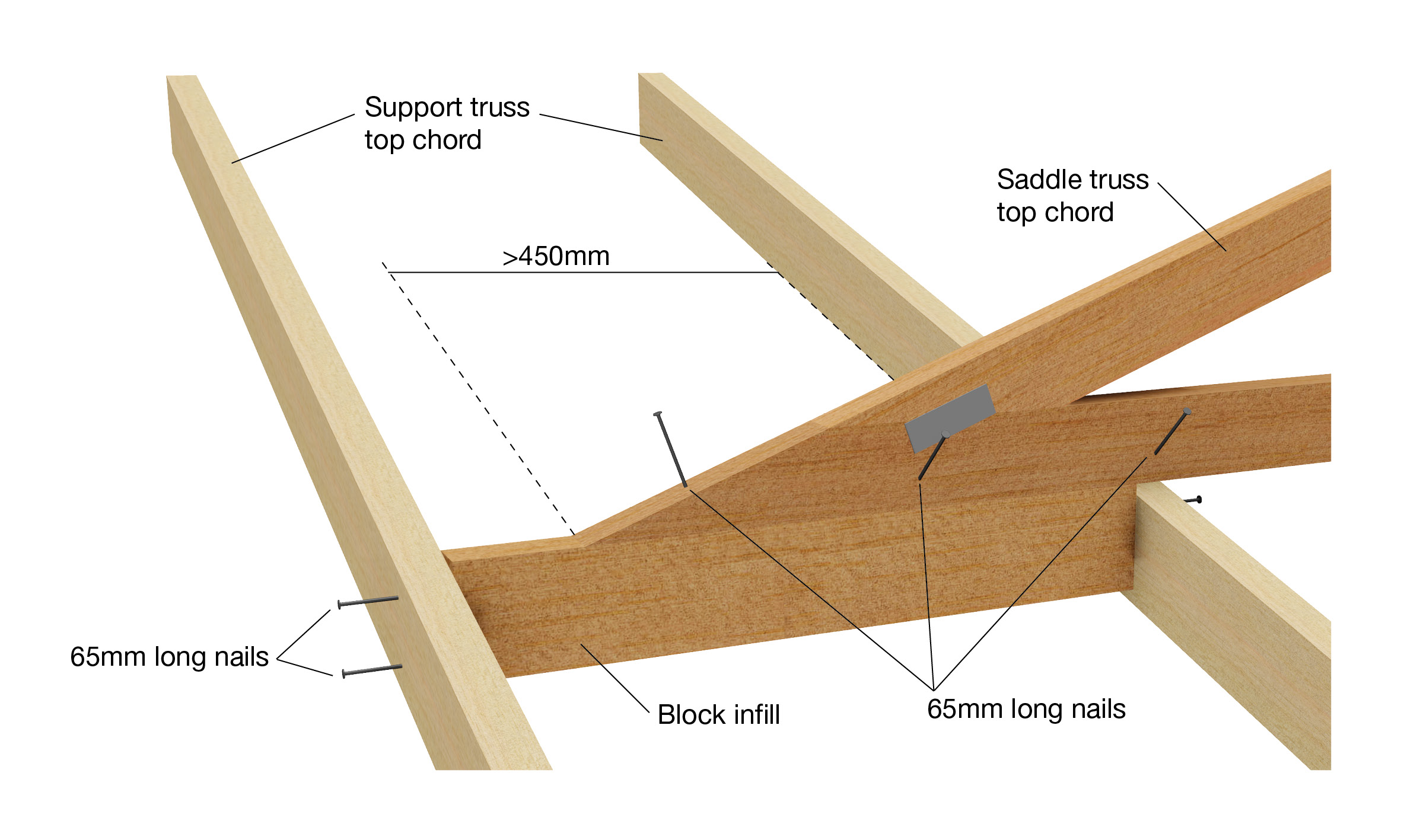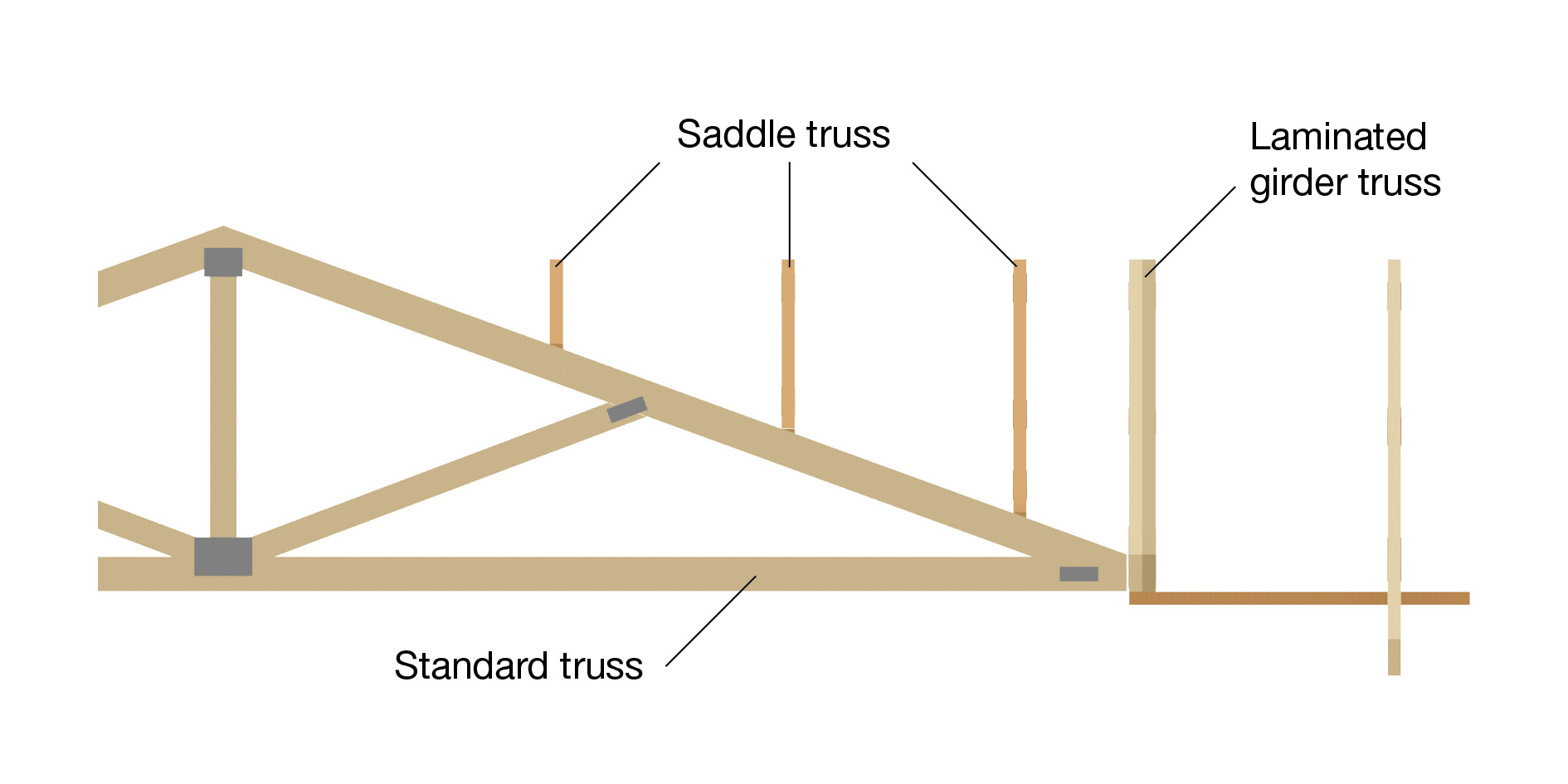Valley truss connection for low wind (design wind speed N1, N2, N3 or C1)
Connection of valley trusses to the supporting truss for a low wind area shall be in accordance with the details shown and described.
Roof pitch ≤15° - one effective 75mm x 3.05Ø nail through bottom chord of valley truss into top chord of supporting truss at each intersection of the trusses.
Figure C3-01-01-03

Roof pitch > 15° - one effective 65mm skew nail through bottom chord of valley truss into top chord of supporting truss at each intersection of the trusses, plus one 35mm x 45mm minimum timber block nailed to supporting truss top chord with one 75mm x 3.05Ø nail or one framing anchor without timber block.
Figure C3-01-01-04

Block infill - (minimum of 70mm x 35mm) to where the valley truss is cantilevered more than 450mm or where the valley truss is not supported by two truss top chords, fixed to the valley truss bottom chord with 2/75mm x 3.05Ø nails, and each end to supporting truss top chord with 2/75mm x 3.05Ø nails.
Figure C3-01-01-05

Valley truss connection for high wind (design wind speed N4, C2 or C3)
Connection of valley trusses to the supporting truss for high wind area shall be in accordance with the details shown and described.
Supporting trusses with a ceiling - one framing anchor with 4/30mm x 2.8Ø reinforced-head nails to each face.
Figure C3-01-01-02

Supporting Trusses Without a Ceiling - two framing anchors with 4/30mm x 2.8Ø reinforced-head nails to each face.
Figure C3-01-01-03

Block infill - (minimum of 70mm x 35mm) to where the valley truss is cantilevered more than 450mm or where the valley truss is not supported by two truss bottom chord with 2/75mm x 3.05Ø nails, and to each end of supporting truss top chord with 2/75mm x 3.05Ø nails.
Figure C3-01-01-05
